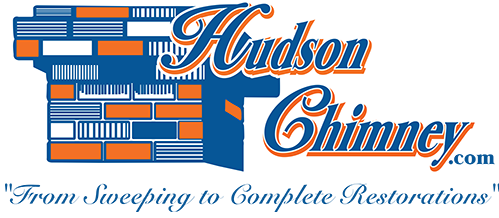by Mark Hudson | Apr 29, 2015 | Chimney Swifts
If you have ever heard chattering, fluttering, and other noises coming from your chimney as the weather gets warmer, there is a good possibility that chimney swifts have taken over your chimney as their new home. These migratory birds are named for their habit of nesting in chimneys. Once a family of chimney swifts has nested in your chimney, it is illegal to remove them. Some of our customers choose to share their chimneys with these birds every year. However, Hudson Chimney is often asked how to prevent chimney swifts from setting up their summer homes in their chimneys, and we recommend installing a chimney cap with mesh siding to keep these birds from ever entering your chimney. We would like to tell you more about chimney swifts and what you can do about them nesting in your chimney.
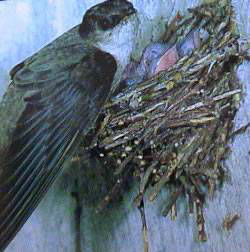
What exactly are chimney swifts?
According to the Driftwood Wildlife Association’s project to promote the conservation of chimney swifts, they are fascinating, adaptable birds who learned to nest and roost in chimneys when their native habitat of large hollow trees in forests of North America were cut down. The birds make their return from South America after their wintering is over, and as they are migratory, they tend to return to the same nesting area. However, if a family of chimney swifts does nest in your chimney, you should be aware that these birds are protected by the Migratory Bird Treaty Act, and removing or destroying nests with eggs or young can result in fines and penalties.
What should I do if I would like to share my chimney with chimney swifts?
On the Driftwood Wildlife Association’s website, the article “Being a Good Chimney Swift Landlord” offers invaluable tips for those who do not mind sharing their chimney with these birds. Because they do only nest during the summer season, this article recommends having your chimney swept in mid-March to have all of the creosote build-up removed. An abundance of creosote deposits makes it impossible for the chimney swifts to build their nests to the walls without danger of falling. This article also stresses the importance of chimney swifts being protected by federal law and warns against chimney sweep businesses who illegally remove chimney swift nests and eggs. Be wary of companies who advertise “bird removal,” as this is a blatant violation of state and federal laws that protect migratory birds. Instead, choose a trusted company like Hudson Chimney to perform your annual chimney sweep. Even though the noises of the baby birds chirping for food can be shrill and annoying, they will not last forever. Remember that this is only temporary, and after this short period, you will practically not even realize the chimney shifts are there. However, be sure your damper is completely closed to keep them from flying into your house.
What should I do after the chimney swifts leave in the fall?
The nests of these birds are small, cup-shaped constructions of small twigs glued to chimney walls by the saliva of the chimney swifts. Too small to be a fire hazard, you will still need to contact Hudson Chimney to remove the nest after they leave in the fall. This is needed to remove bird parasites. Additionally, as chimney swifts tend to return to the same nesting spot, you do not want them to try to use the old nest as it will be unstable and probably collapse.
What if I want to prevent these birds from nesting in my chimney?
A good quality chimney cap that is equipped with mesh screening is the best prevention against chimney swifts moving into your chimney. Hudson Chimney sells and installs a variety of different caps, and we can advise you on the best time to install your new chimney cap.
Want to know more information about chimney swifts? Contact Hudson Chimney to learn more about these birds as well as about chimney cap installation.
by Mark Hudson | Mar 27, 2015 | Chimney Water Damage
If your home has a masonry fireplace, you might know that the Chimney Institute of America (CSIA) has named water as the biggest enemy of your chimney. Water penetration of your chimney is the biggest cause of expensive and extensive damage to the interior and the exterior of your home. Keeping water out of your chimney is the essential key to prevent the deterioration of the entire structure. At Hudson Chimney, our CSIA-certified technicians are well aware of the damage water can do to a masonry chimney, and we can find the leak, repair the damage, and then prevent further water penetration of your chimney. Often asked by our customers how water can be such a big problem, we would like to share three ways water leaks can do lots of damage to a masonry chimney.
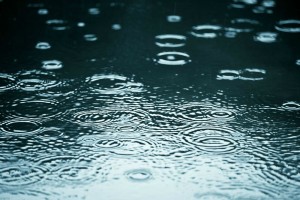
1. Water leaks can cause brick and mortar spalling, which can lead to structural damage.
The exterior bricks and mortar of your chimney suffer a great deal of water exposure, and this water will penetrate into the materials, which causes them to erode. When this trapped water freezes inside your bricks and mortar, the breaking apart, cracking, and loss of masonry materials occurs when the temperatures rise and the water thaws. The expansion of the thawed water can be too much for bricks to endure, which is why they become loose and/or break off of your chimney. This phenomenon is known as spalling, and unrepaired spalling can lead to possible severe structural damage of your chimney. Additionally, water will continue to invade your chimney through the holes provided by the spalled bricks and mortar. If you ever notice loose bricks or mortar on the exterior of your chimney, contact Hudson Chimney for a chimney inspection. We will repair the damage and waterproof your chimney to prevent spalling from occurring again.
2. Water leaks can cause cracks and other deteriorations to your chimney flue liner, which can lead to carbon monoxide poisoning.
Water penetration not only affects the bricks and mortar of your chimney, but it causes damage to your interior flue liner as well. If you have a clay chimney liner, cracks will form due to water leaks, and if you have a metal chimney liner, rusting will occur from water exposure. Both of these problems can cause your liner to break apart and crack. A cracked liner can be a health hazard since your chimney liner serves to protect you and your family from the by-products of combustion, like toxic smoke and carbon monoxide, from entering your home. At Hudson Chimney, we can repair and restore clay chimney liners with HeatShield, and we can replace damaged liners with a durable stainless steel.
3. Water leaks can cause interior damage to your home, including stained walls and ceilings and mold growth.
Not only does water penetration of a masonry chimney cause many issues to the chimney itself, but a leaky chimney can also stain the ceilings and walls of the room where your fireplace is located. If you find water leak stains in your fireplace room, you should also consider the possibility of mold growth in the ceilings, walls, fireplace, and chimney. Contact Hudson Chimney as soon as possible if you ever see this sort of water penetration damage.
If you have more questions on what types of damage water penetration can do to a masonry chimney, contact Hudson Chimney today. We are happy to help you repair and prevent this kind of damage to your fireplace and chimney.
by Mark Hudson | Feb 26, 2015 | Top Sealing Damper
According to the Chimney Safety Institute of America (CSIA), a damper is an important component of every chimney. Essential for an energy-efficient home, the damper keeps the heat in and the cold air out of your house, which saves you money on heating bills. Your damper is also used to control the flow of smoke, gases, and the other byproducts of combustion up the chimney to exit your home. Available in two different types, you can choose between the throat damper and the top-sealing damper. Also known as the traditional fireplace damper, a throat damper is installed right above the firebox and is found in many old masonry chimneys. However, this type of damper has many flaws and issues. At Hudson Chimney, we strongly recommend the top-sealing damper over the throat damper. We would like to tell you more about the benefits of these dampers.
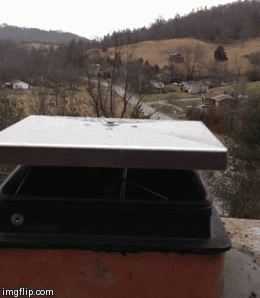
This clip is courtesy of Richie Baxley at Environmental Chimney Service in Asheville NC.
A top-sealing damper serves two functions, allowing you to “kill two birds with one stone.”
One of the main benefits of a top-sealing damper is that it also serves as a chimney cap when the damper is closed, and, to be honest, this type of damper actually gives you better protection than an ordinary chimney cap. Equipped with a silicone rubber gasket that seals in heat and air conditioning as a damper, a top-sealing damper also gives you an air-tight seal to keep out water, debris, birds, squirrels, and raccoons — just as a chimney cap would. When our customers need a new chimney cap, Hudson Chimney will recommend that they install a top-sealing damper instead of a chimney cap. Some models of top-sealing dampers come with caps, so even when the damper is open, your chimney is still protected from debris and animals.
A top-sealing damper will save you both energy and money.
Throat dampers just do not completely seal as well as top-sealing dampers. You will not have to worry about cold air, ice, and snow entering your flue to create a cold core in your chimney. A cold core tries to cool your home at the same time that your heating system is trying to warm it up, which wastes both fuel and money. As a top-sealing damper sits atop your chimney, cold air never even has a chance to get anywhere inside because your entire flue is sealed air-tight with the silicone rubber gasket. Believe us when we say you will save money on both cooling and heating bills when you install a top-sealing damper.
A top-sealing damper is easy to operate.
With some throat dampers, you must practically stick your head up the fireplace to open and close them. When you have a top-sealing damper, opening and closing the damper is simple. A stainless steel cable from the damper drops down the chimney and connects to an easily-accessible handle which is mounted inside the firebox. Different models will have different opening and closing methods, but Hudson Chimney guarantees you will find all easy to use.
Want to know more about the benefits of top-sealing dampers? Contact Hudson Chimney to find out even more advantages to this type of damper.
by Mark Hudson | Feb 6, 2015 | Chimney Service
Believe it or not, spring is on its way, and fireplace season will be slowing down. To be sure your chimney is safe after a long and cold winter, scheduling your annual chimney sweeping and inspection now is essential, especially if your chimney is in need of important repairs. At Hudson Chimney, one of our busiest times of the year is the spring, and if you procrastinate for too long, you may have to wait for several weeks before you can arrange an appointment for our certified technicians to visit your home to clean, examine, and repair your chimney. According to fire safety organizations such as the National Fire Prevention Association (NFPA), it is recommended you schedule a chimney sweeping and inspection once every year. We would like to share with you the important chimney maintenance steps our chimney technicians will take to find essential repairs needed to make your fireplace and chimney system safe.
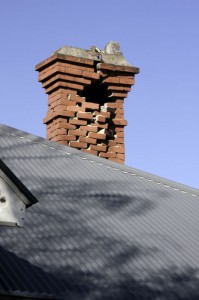
CHIMNEY SWEEPING
When the Chimney Safety Institute of America (CSIA)-certified sweeps at Hudson Chimney clean your chimney after winter, our main concern is removing all of the creosote deposits that have accumulated on the walls of your chimney. Forming naturally as the by-products of combustion (smoke, gases, tar fog, vapors, etc) exit the cooler walls of your upper chimney, creosote is the highly combustible result of the condensation that occurs. Creosote can be either black or brown, and its appearance can vary. Whether it is sticky and gummy, crispy and brittle, or shiny and hard, creosote, especially in large amounts, is extremely flammable, which makes it the cause of a majority of chimney fires. Getting rid of these creosote buildups after winter’s heavy fireplace usage is essential to the safety of your chimney.
CHIMNEY INSPECTING
Hudson Chimney takes pride in performing detailed post-winter chimney inspections because we want to find any damage that needs repairing to ensure the safety of your fireplace and chimney. Of course, we seriously examine every part of your chimney; however, there are specific repairs we are looking for, including the following:
damaged or deteriorated masonry — Loose bricks and chipped mortar on the exterior of your chimney are sure signs of water penetration damage, and this alerts us to the possibility of water leaking inside your chimney that creates even more damage to its interior. If this masonry damage goes unrepaired, you will end up with costly repair work, including a possible rebuild of your entire chimney.
cracks in the chimney cap — Your chimney cap serves as protection from both water and animal intrusions of your chimney. A deteriorated chimney cap serves no help at all to your chimney. We can repair cracks and other damage to chimney caps as well as install new caps if the existing caps are beyond repairing.
cracks and holes in the chimney flue liner — Water leaks can cause serious damage to the liner of your chimney that can endanger your family’s health. A deteriorating flue liner allows toxic gases like carbon monoxide to leak into your home. Repairing or replacing a damaged chimney flue liner will keep those gases exiting out of your chimney instead of infiltrating the interior air of your home.
Save yourself the hassle of waiting for weeks to maintain your chimney after winter by contacting Hudson Chimney now. We are happy to schedule an appointment for your annual sweeping and inspection as well as perform all necessary repairs.
by Mark Hudson | Dec 15, 2014 | Firewood
If you have a wood burning fireplace or stove, you may wonder if there is anything of significance that you can do to maintain the efficiency, safety, and health of your appliance. The answer is yes! By choosing the best firewood to burn in your appliance, you can protect your chimney or stovepipe from rapid creosote build-up and your home from dangerous chimney fires. Not only this, but the right firewood will help you to create fires that are warmer and more enjoyable.
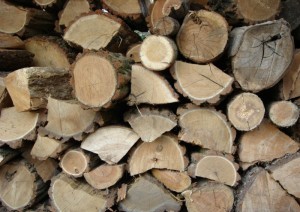
Regardless of the type of woodburning appliance you own, you should only burn seasoned firewood. According to the Chimney Safety Institute of America, the distinction between seasoned and unseasoned firewood is its moisture content. Seasoned firewood has a low moisture content, usually between 20 and 25 %. Unseasoned firewood, on the other hand, can have a moisture content as high as 45 %. Burning firewood with a higher moisture content can cause you and your chimney a number of problems, from the unpleasant to the dangerous. You will have trouble enjoying your chimney if you burn unseasoned firewood because of the unpleasant smell and smoke it produces. However, your biggest concern is that the water in unseasoned firewood will allow for creosote to rapidly build up in your chimney. Creosote is highly flammable, creating a hazard for chimney fires, and can build up into glazed creosote, which can only be removed from your chimney by a professional with chemicals.
If you chop your own firewood, it is easy to know if it is seasoned or unseasoned. Simply be sure to cut your firewood to length six months before you plan to use it in order to give water in the wood time to environment. Cutting your wood to length opens up the microscopic tubes in the wood that hold water, which allows the water to escape.
If you buy your firewood, it is a little more difficult to tell if your firewood has been properly seasoned. The best way to be sure your firewood has been properly seasoned is to buy it six months before you intend to use it and store it properly. However, seasoned and unseasoned firewood have characteristics that differentiate them from each other that you can utilize to see if the firewood you are buying has been seasoned. Seasoned firewood has darker ends and more cracks than unseasoned firewood and also tends to be lighter. Seasoned firewood also makes a clunking rather than a thudding noise when it is hit.
Whether or not you buy or chop your firewood, you must be sure that it is properly stored. A wood shed is the best place to store firewood. However, you can also store wood in a sunny location as long as you remember to cover the wood when it rains or snows. No matter where you store it, make sure that air is allowed to circulate to promote evaporation and try to store the wood off of the ground.
Give Hudson Chimney a call if you are unsure if you are burning the correct kind of firewood or if you have concerns regarding creosote build-up. The professionals at Hudson Chimney know how to keep you and your home warm and safe!
